Exclusive First Look: 2014 Nissan GT-R
Exclusive First Look: 2014 Nissan GT-R

Granted, it's not the prettiest objet d'art to ever grace the automotive scene. However, the GT-R's engineering ethos has always been one of form following function. The outlandishly curvaceous bodywork favored by other manufacturers takes a backseat to whatever technology makes the GT-R go faster, corner harder, and brake better than the competition. This helps explain why Nissan's effort at rounding off some of the GT-R's rough edges included a regime of hot-laps at the world famous Nürburgring in Germany.

Tuned at the Track
Years of racing knowledge, and thousands of miles spent circulating the Nürburgring, one of the world's most daunting circuits, have led to a thorough round of improvements for the road-going GT-R. Overall power from the 545-bhp turbocharged 3.8-liter V-6 engine remains the same, but Nissan's team of engineers focused plenty of attention on improving mid-range engine response and high-speed acceleration. The Nissan GT-R story is "one of continuous improvement," said Carl Phillips, Nissan's head of marketing for the GT-R in the U.S. "There's always something new for every model year. We're taking one of the world's greatest cars and making it better."

Like the iconic Porsche 911, the Nissan GT-R story is one of gradual change, not drastic makeovers. New high output fuel injectors have been incorporated into the engine, to better control fuel injection and improve throttle response. "A new oil pan baffle better stabilizes oil under high g-forces," explains Carl Phillips. A new specially developed orifice to the relief valve is added to the turbocharger bypass, to help maintain the GT-R's acceleration at high speeds. Thanks to these detail improvements, keen drivers will notice a stronger plateau of torque from 4,500 to 6,000 rpm in the latest GT-R.

For those moments when you're not stomping the gas pedal on a straightaway, you can pop open the hood for an extra bonus. "I'm not sure we've talked about the craftsmanship of the GT-R that much in the past," says Phillips. "The [GT-R] engines are all built by hand...a single person builds each engine from start to finish." To drive the point home, a plaque located at the front of the engine, near the oil dipstick, bears the name of the individual who constructed the turbo V-6 for each GT-R.
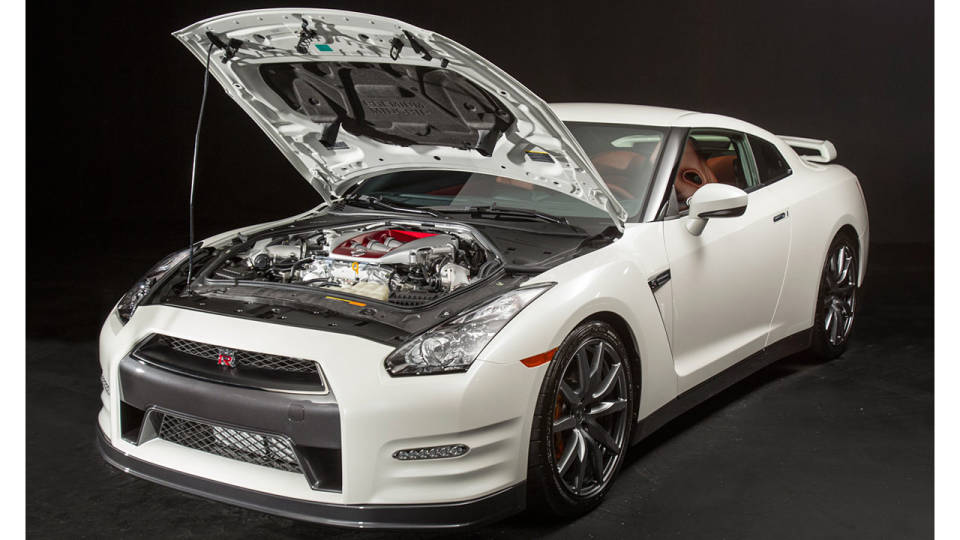
Clipping Apexes
Based on its years of racing experience, and those aforementioned testing sessions at the `Ring, Nissan's engineering team worked to lower the GT-R's center of gravity. Having as much weight located as low as possible is a sure-fire way to improve handling and the overall behavior of the suspension. Nissan's modifications were done with an eye on improving performance during track day sessions and, conversely, giving a boost to driving refinement during everyday use. Nissan began by lowering the GT-R's center of gravity with the deflection of the suspension bushings and tires. The shock absorbers and front anti-roll bar have also been retuned for the 2014 model year, to provide more stable behavior at high speeds.
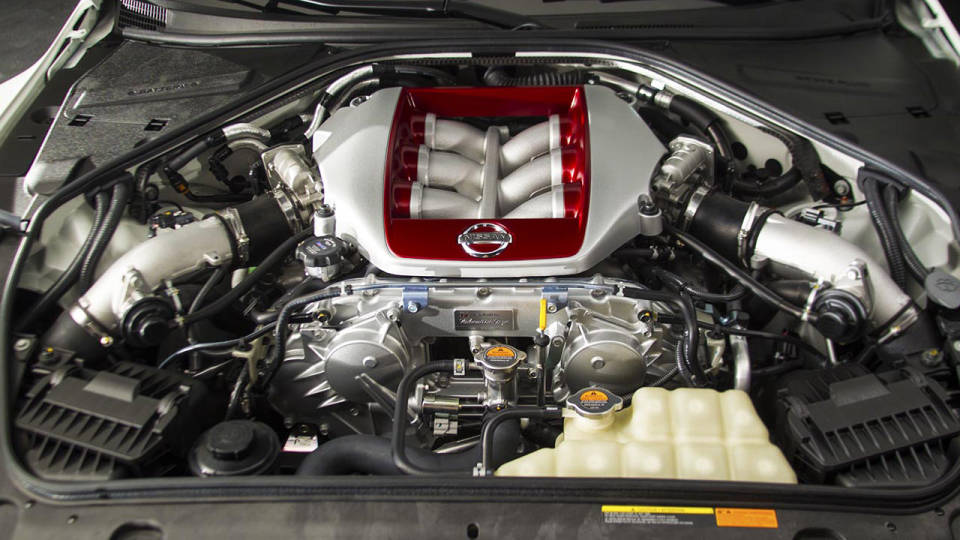
Cam bolts have been installed on the front suspension to improve camber accuracy and better maintain alignment settings. Meanwhile, the torque from the driveshaft to the hub bearings is increased, to improve reliability during what Nissan refers to as "high-stress situations" (i.e. track driving). Chassis reinforcements were also added behind the dash panel bar and instrument panel, to boost rigidity. While not new for the 2014 model year, it's worth noting that Dunlop developed its SP Sport Maxx GT600 tires exclusively for the GT-R. "The close working relationship between our engineering team and Dunlop is a big part of the car's development," says Nissan's Carl Phillips.
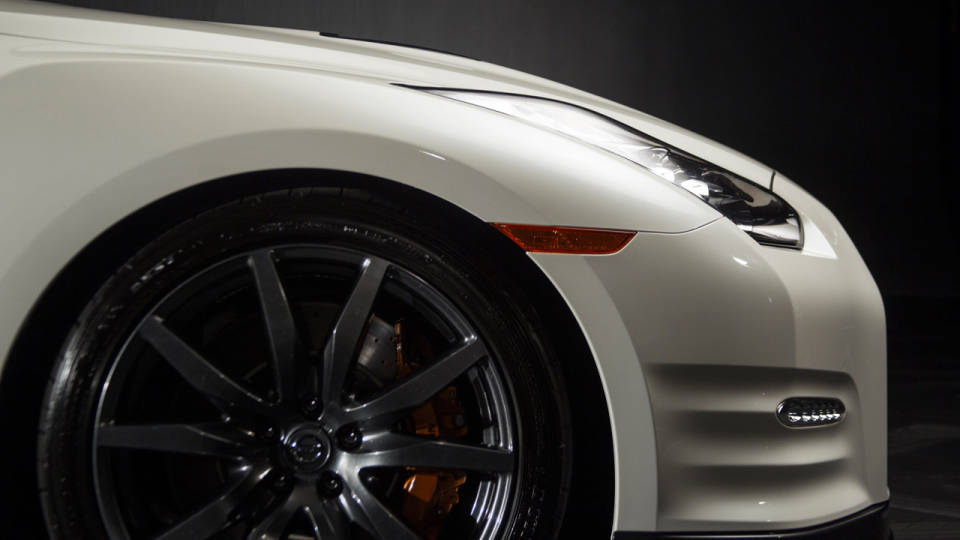
Despite some earlier predictions that the new GT-R could shed a few pounds, the 2014 model has approximately the same 3,825 lb. curb weight of the outgoing model. Nissan also decided not to tweak the GT-R's ATTESA ET-S four-wheel-drive system, adaptive sport suspension, and dual-clutch automatic (with manual controls). Sometimes it pays not to mess with a good thing.
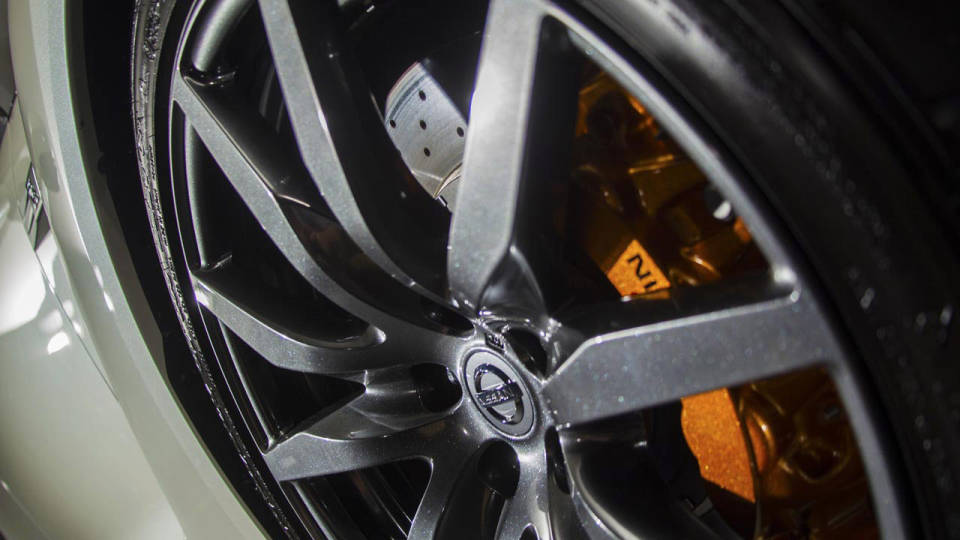
All in the Details
The wheels and exterior of the GT-R are also carry-over, though don't be fooled into thinking the brutish-looking style of this Nissan is short on technical advancement. Believe it or not, the GT-R has a drag coefficient of only 0.26 Cd. That's almost equal to the 0.25 Cd served up by the fuel-sipping ToyotaPrius hybrid. The "aeroblade" design of the GT-R's fenders not only looks aggressive, the shape has been optimized to improve airflow along the sides of the car. The vents in the front fenders are also entirely functional, and are there to pull heat from the V-6 engine, reduce air pressure, and provide more extra downforce.
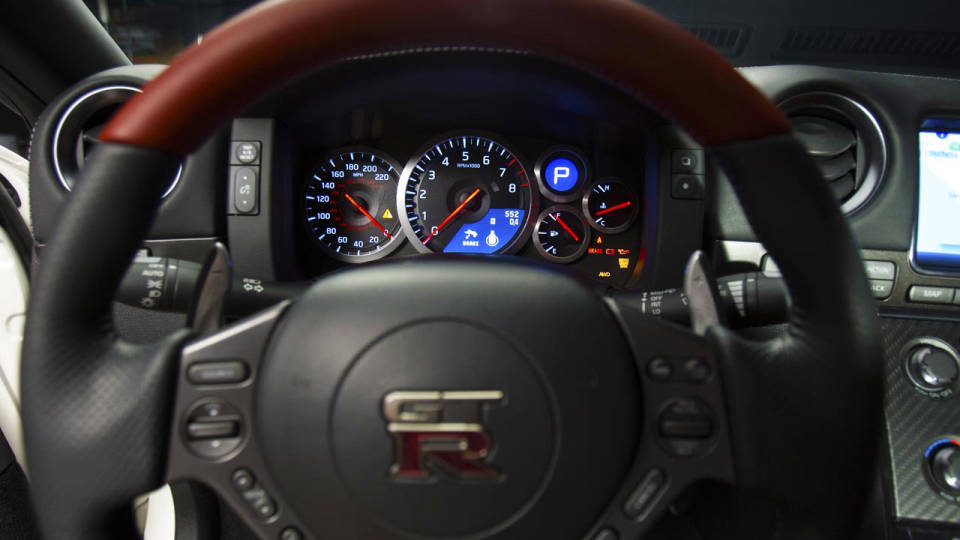
Nissan says cabin improvements, especially an optional "amber red" leather trim available on the Premium trim level, are meant to appeal to a wider range of customers – specifically women and older, more mature clients. While the added luxury is a nice touch, we're willing to bet that GT-R customers remain a dedicated core of enthusiasts who value 0-60 mph times over soft-touch surfaces. Still, the improvements are appreciated, and impart a more upscale feel to the cabin. Pricing will be announced closer to the 2014 GT-R's official on sale date, scheduled for the early part of next year. If you simply can't wait, then consider a move to Japan, where the new and improved GT-R is already available.
UNDER MAINTENANCE